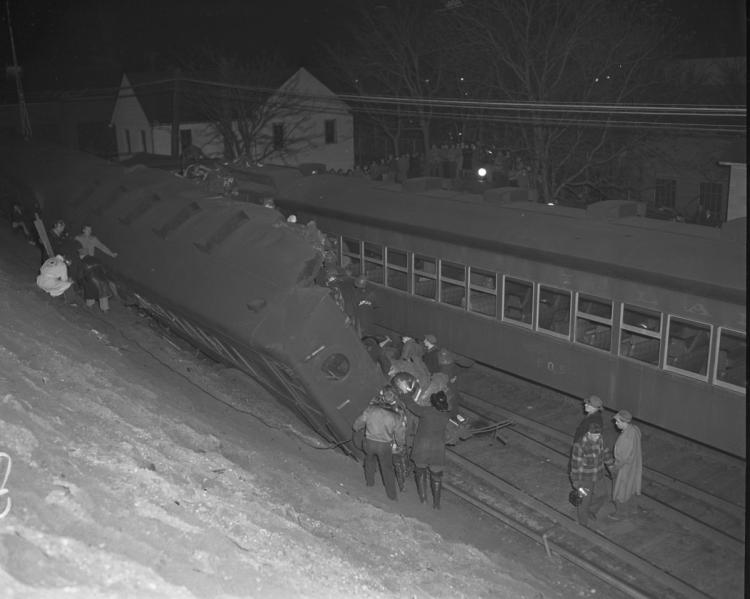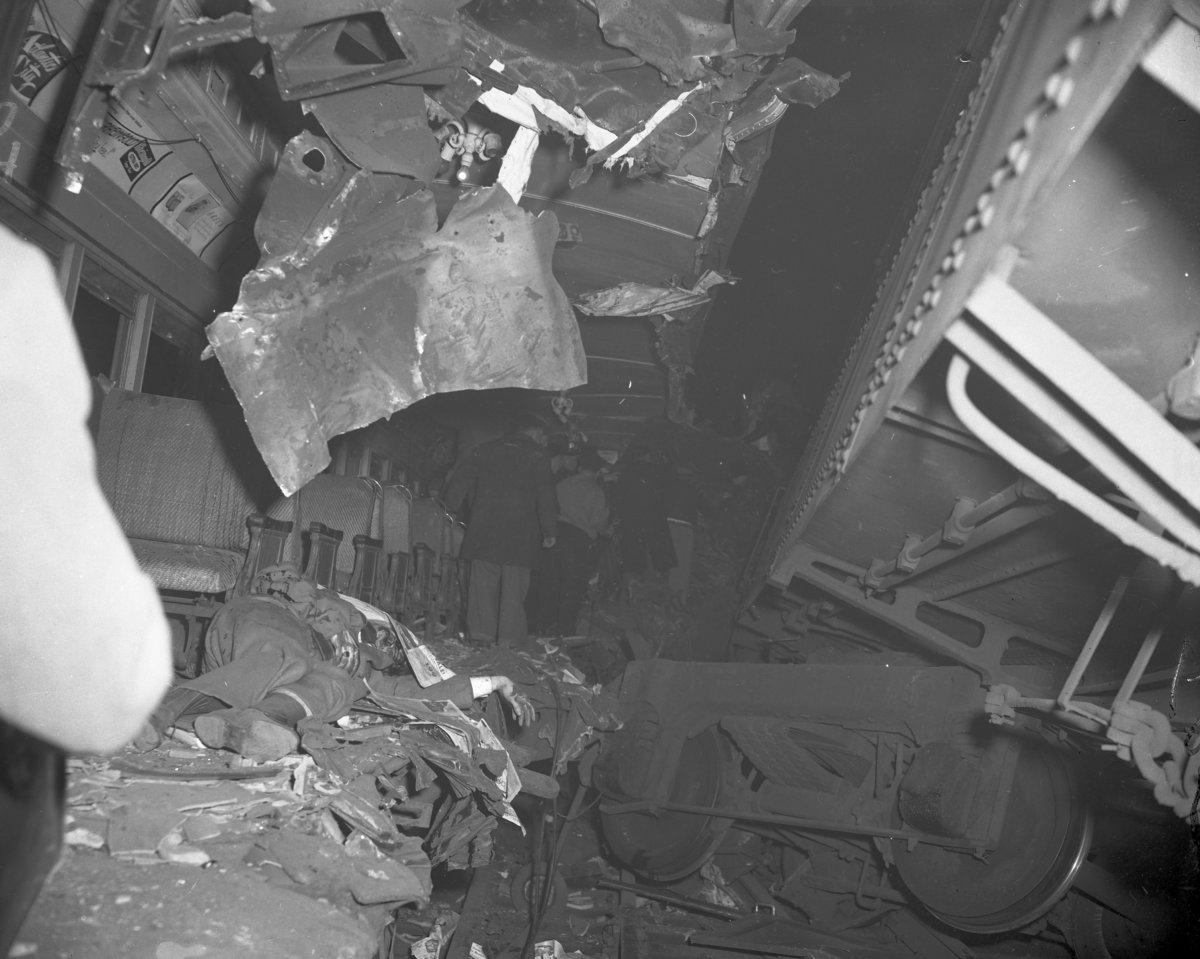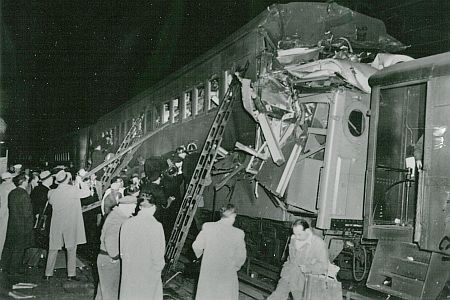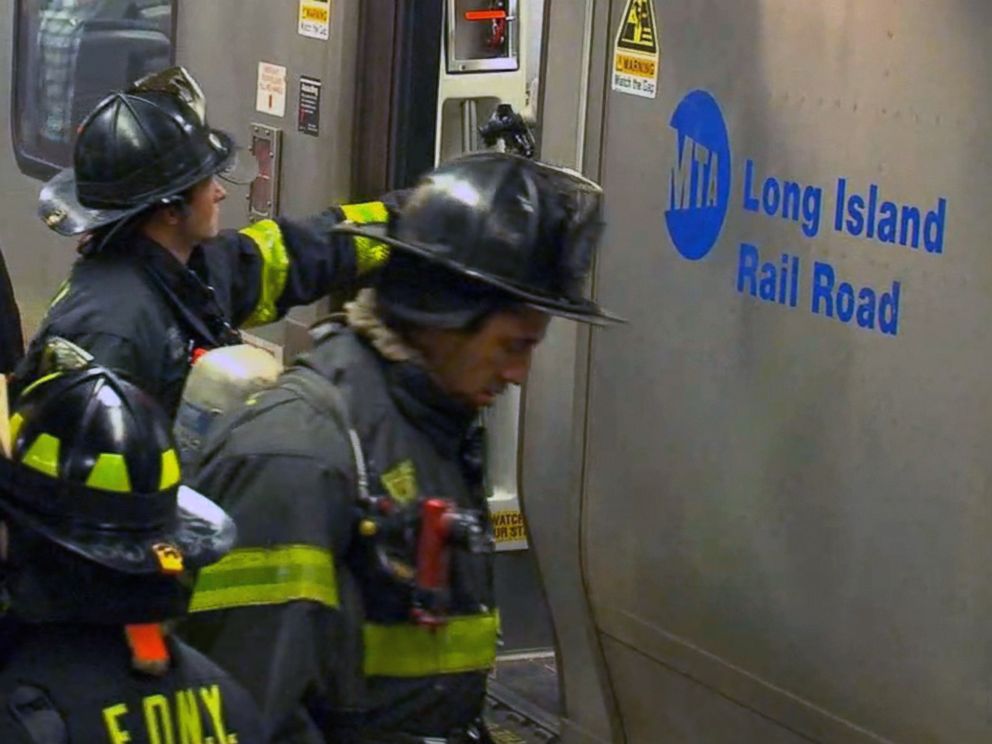As reported by the New York Daily News on February 18th of 1950, it was dark on the train as passengers fought to find the exit. The screams from injured passengers may have been the only thing survivors had to guide them. Nobody knew it yet, but the crash had injured 115 people.
In more recent history, a Long Island Rail Road (LIRR) train derailed in downtown Brooklyn Wednesday morning, injuring 100 passengers. It was a scary moment for the people on that train, especially for those injured, but nothing could compare to what happened to two LIRR trains, the night of February 17th, 1950 or the Kew Gardens crash on November 22 that same year.
In total, the two crashes injured 478 people but killed 107. Unlike the recent LIRR derailment, which was just one train that didn’t stop in time, the 1950 crashes involved two trains colliding. They were the worst crashes in LIRR history. 1950 marked their bloodiest year.
Rockville Centre

(source: nydailynews.com)
February 17th, 1950, At the time, Rockville Centre was under construction. An overhead grade-crossing project ran through the middle of Rockville Centre.
The project forced all the trains to run on one track, east, and westbound. This just near where the train crossed Banks Avenue at the time, right near where the modern day station still stands.
Train number 78 left Penn Station at 10:03 pm, scheduled to hit Rockville Centre at 10:36. That train ran through a signal block at Banks Avenue, putting it on the single track at the wrong time. That mistake would prove fatal.
The 175 left Babylon at 9:58 pm, running a few minutes behind schedule when it crossed the Rockville Centre station.
Fate put them on a collision course.
Survivors of the crash heard the screech from one or both trains just before impact. In the Daily News account, one man, Ben Maruzzo was talking to a woman on the train when he flew forward. When he came to, the woman was dead and the accident had injured many people.
His recollection of the moments after the crash was fuzzy; all he could see was blackness. All he could hear was that people were in pain. They were screaming. One man begged for someone to end his life. Maruzzo made his way out through a broken window.
The Rockville Collision

(source: nydailynews.com)
When the two trains collided, one train sheared the side of the other’s front car. There were no cell phones or Twitter, so news traveled at the speed of phone calls.
If this happened today, survivors would find their way with cell phone flashlights. The 1950 incident was a pitch black experience in every way.
From Maruzzo and other accounts, what they could see were broken bodies everywhere, in the train and out.
The crash emptied the offices of all neighboring resources, police, first responders, and doctors. Everyone who could help came. It filled the hospitals beyond capacity. Everything came to a stop, starting in Rockville Centre, spiraling out.
Adding to the difficulty, as if pitch blackness, bodies, and two mangled trains weren’t enough, the grading project slowed progress even further.
Kew Gardens Crash

(source: oldkewgardens.com)
November 22, 1950. Just east of the Kew Garden station, the Hempstead train came to stop due to a mechanical issue with the brakes. They were stuck.
In these situations, the rear brakeman’s job is to protect the trains with lanterns and flares. The brakeman, thinking he’d heard the train power back up, boarded the train, leaving it unlit to warn oncoming trains.
The oncoming commuter train had no idea there was a train parked in the darkness. It struck the Hempstead train at about 30 miles per hour, that was after the motorman attempted to slow the train by hitting the brakes. He lost his life in that fight.
The force from the commuter train shoved the Hempstead forward 75-feet. It split the rear car in half, lengthwise.
78 people died that day.

(Jan 5th, 2017 LIRR Incident | source: abcnews.go.com)
In both cases, as in this recent case in Brooklyn, negligence was the cause of the accidents. Officials filed charges, judges handed down sentences, and the accused went to jail or paid fines. None of that brought back the dead. None of it saved LIRR from bankruptcy.
The LIRR survived the 1950’s crashes, but in the last few years, there have been several incidences of derailments which stir haunting memories for some folks.
Thankfully, none of the recent train events echo the death tolls of 1950. Let’s hope they never do again.

